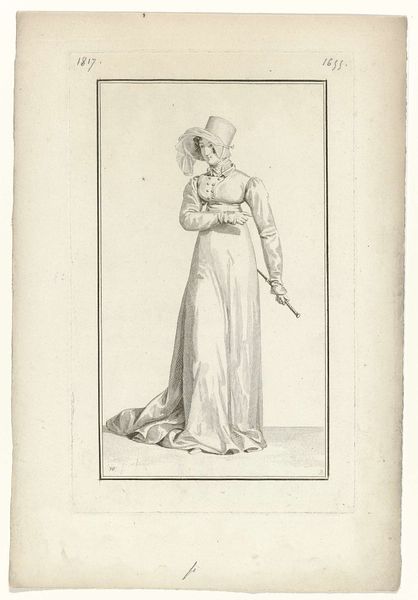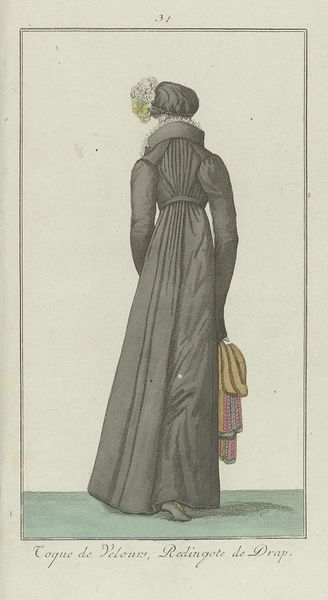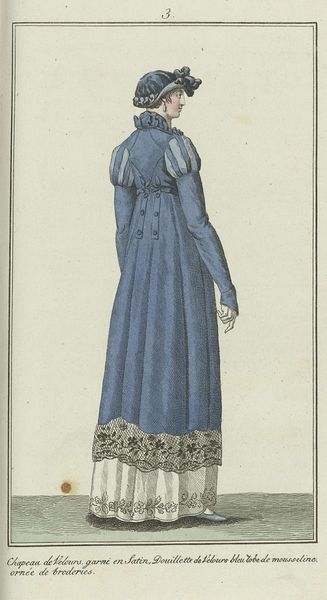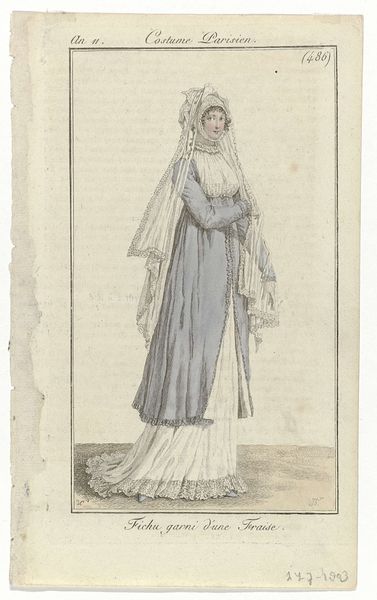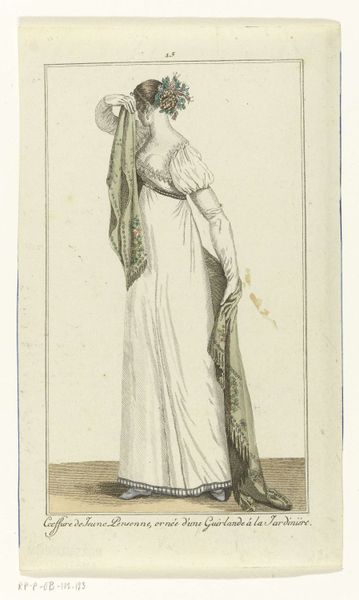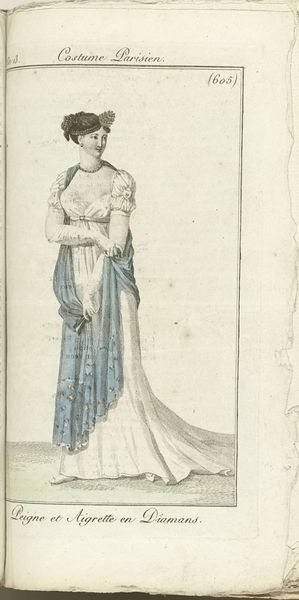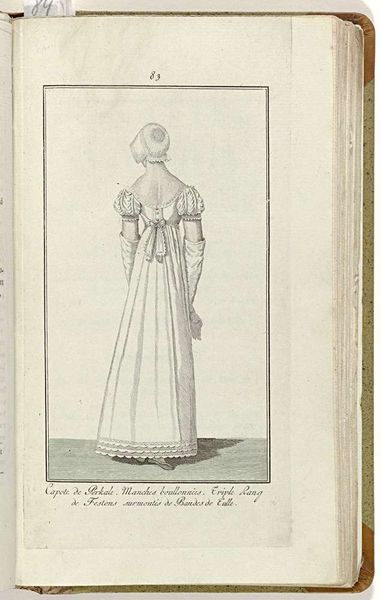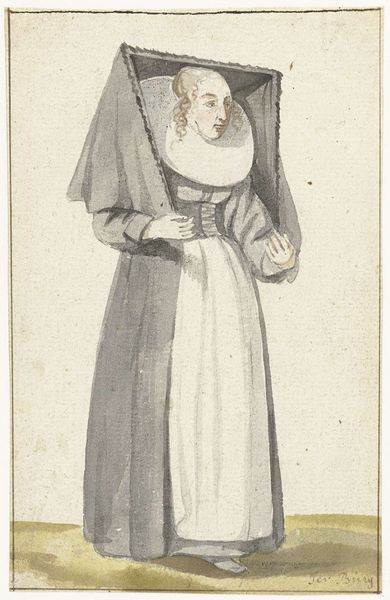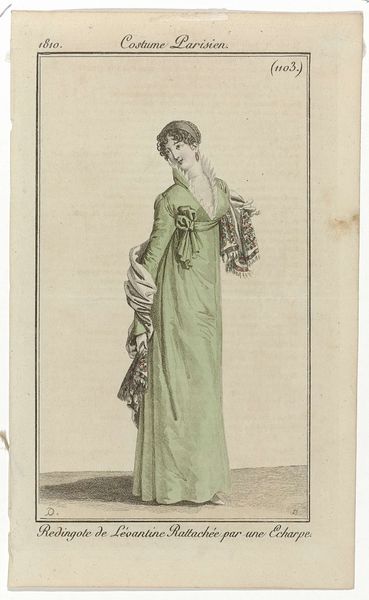
Journal des Dames et des Modes, Costume Parisien, 12 décembre 1803, An 12, (518): Chapeau de Feutr (...) 1803
0:00
0:00
print, engraving
#
portrait
#
neoclacissism
#
narrative-art
# print
#
old engraving style
#
caricature
#
dress
#
engraving
#
miniature
Dimensions: height 187 mm, width 112 mm
Copyright: Rijks Museum: Open Domain
Pierre Charles Baquoy created this print titled ‘Journal des Dames et des Modes, Costume Parisien’ in 1803. It offers us a glimpse into the sartorial expectations and aspirations of women in post-revolutionary France. Fashion plates like this one weren’t just about clothes; they were about constructing and communicating social identity. The high-waisted silhouette and relatively simple design reflect a shift away from the aristocratic opulence of the pre-revolution era, towards a more streamlined, almost classical aesthetic. However, this ‘simplicity’ was still a carefully constructed performance of status. Consider the fabric, likely expensive, and the impracticality of the long train, which speaks to a life of leisure and privilege. There's a tension here: The revolution sought to erase markers of class, yet fashion continued to operate as a signifier of social standing. What does it mean to desire fashion? What emotional needs do these garments fulfill, and what social messages do they send? This image captures a moment in time when clothing was deeply intertwined with the negotiation of identity and social power.
Comments
No comments
Be the first to comment and join the conversation on the ultimate creative platform.
